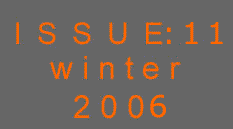

ETRAP 2005
From 23 to 25 November 2005, ETRAP2005,
the 3rd International conference on Education and Training
in Radiological Protection, took place in Brussels. From 25 countries,
the conference brought together 150 practitioners and policy makers
from the medical and nuclear engineering sector, research institutions
and the non-nuclear industry, alongside social scientists, safety
experts, regulators, and representatives of national authorities
and key international organisations.
ETRAP2005 aimed to reinforce
the contacts between various organisations and individuals dealing
with education and training in radiological protection. The conference
provided a platform for exchange of experiences and views on education
and training policy and questioned issues related to harmonisation
of training practice and of skills recognition. Special attention
was paid to the education and training programmes and policy networks
currently emerging at the European and global level.
The spectrum of applications and possible impacts
of ionising radiation is very wide, covering specific practices
and intervention situations. Although working with a variety of
responsibilities and specific professional aims, practitioners
and interventionists have a triple common need:
-
a basic education and training providing
the required level of understanding of the physics of radiation
and the theory and practice of radiological protection,
-
a standard for the recognition of skills and experience,
-
an opportunity to fine-tune and test acquired knowledge
on a regular basis.
In addition, complying with specific European
directives concerning the implementation of a coherent approach
to RP E&T becomes crucial in a world of dynamic markets and
increasing workers’ mobility. The enlargement of the EU
by 10 new member states has to be considered as an additional
challenge regarding the fulfilment of these requirements.
In this spirit, ETRAP2005 showed
a common readiness to provide a coherent answer to the above mentioned
triple need. Discussions during a special plenary session resulted
in a conference declaration that was put forward to national and
international policy makers at the end of the conference. The
declaration identifies 4 elements of key importance :
Clarification
Starting from existing international definitions
and guidelines, clarification of the terminology and of the responsibilities
of each relevant category of addressee is the main prerequisite
for ensuring mutual understanding of the issues at stake.
Harmonisation
Qualifications, the related requirements and
methods for assessing them should be harmonised as much as possible,
taking into account the need for continuous education and training
and the diversity of national approaches. Within this context,
confidence building across institutional and national borders
is a prerequisite for mutual recognition. One tool that can help
build up this confidence is a process of reciprocal peer-reviewing
of expertise.
Broadening the perspective
The theory and practice of radiological protection
should be embedded within an overall governance of health and
safety, and its focus should be widened by including trans-disciplinary
aspects such as risk assessment and involvement of stakeholders.
An integrated approach to education and training, in this sense,
will enable professionals to gain more confidence in their work
and to maintain credibility towards stakeholders and the general
public.
International cooperation
International organisations should continue to
initiate and foster projects and networks relating to education
and training in radiological protection. They are urged to ensure
synergy between ongoing and new initiatives by establishing the
co-ordination of efforts on an international level. With the aid
and support of Member States, they should explore conditions to
guarantee the sustainability of successful projects and networks
beyond their initial support phase. Finally, they are called upon
to further develop common standards and requirements in order
to ensure an integrated and harmonised approach to education and
training in radiological protection.
The full text of the declaration and all papers
that were presented during the conference can be found on www.etrap.net.
This website will also cover all future ETRAP
conferences and related activities.
|






